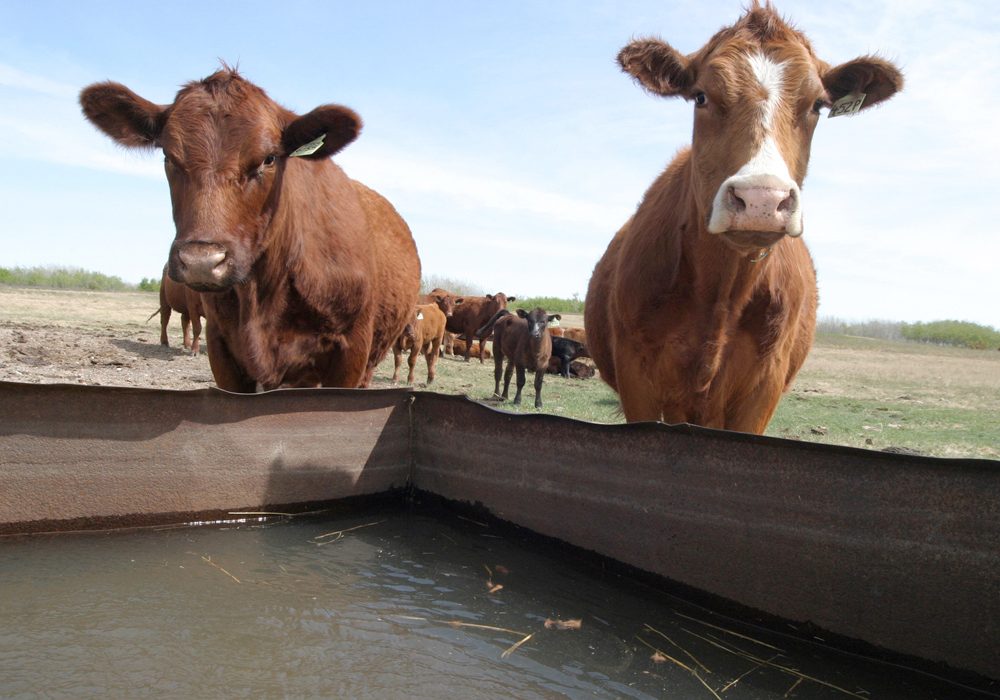I left the hallowed halls of the Western College of Veterinary Medicine at the University of Saskatchewan 13 years ago and embarked on my career as a veterinarian.
Reflecting on this passage of time, most of which I spent in the practice of pathology, there are some weird and interesting cattle cases that stand out.
The most dramatic was one of the first cases I ever worked on, back in 2011 as a first-year graduate student just learning the ropes of veterinary pathology. The patient was a massive dairy cow with enormous kidneys.
Read Also

Canadian Food Inspection Agency slammed for handling of bovine tuberculosis case
The federal government leans heavily on producers to “take one for the team” and risk their livelihoods without any reassurance of support.
On a farm visit, the herd veterinarian diagnosed her with pyelonephritis, which is a severe infection and inflammation of the kidney.
Getting a clinical diagnosis is often helpful before I start an autopsy. They are usually spot-on. But there is always the possibility that the vet wasn’t able to narrow down the diagnosis completely, that something was missed or even misdiagnosed.
For this reason, I always follow a standard protocol when opening an animal and systematically examine the organs, no matter what I’m told the issue may be.
Imagine my surprise when I opened the abdomen to find the largest kidneys I had ever seen. Instead of being roughly the size of a sweet potato, these kidneys were about the size of basketballs. The ureters (the tubes that connect the kidneys to the bladder) were so enlarged they were roughly the size of my forearms. Normally they should be delicate, thin, hard-to-find tubes the size of a finger.
A bacterial infection of the bladder had tracked up the urinary system and the kidneys had filled with a disgusting mixture of pus and urine. Needless to say, the cow had been very ill before euthanasia.
But that isn’t all that was involved with this case. As an unrelated bonus, this cow had a spectacularly named abnormality of her uterus. Normally, the uterus of a cow should branch into two distinct horns. In this cow, there was only a single horn. Hence the name uterus unicori, meaning a one-horned uterus.
Another remarkable case was that of a feedlot steer. When I opened the body, the muscles and connective tissue of the neck were an array of greens and yellows indicating an active infection rather than the normal red colour of healthy muscle.
The chest cavity was filled with an odoriferous fluid that compressed the lungs. Mats of fibrin, a string-like material that forms when blood vessels leak protein during inflammation, covered the lungs and inner ribs. Most likely, an injection into the neck muscles accidentally inoculated bacteria deep into the tissue where it festered and spread. Gravity would have assisted to spread the infection into the thorax. The resulting inflammation caused fluid to leak out of blood vessels and pool in the chest. The steer would have had difficulty breathing leading to euthanasia.
A final interesting case was that of an “ain’t doin’ right” cow. She had lost weight, had a mild fever and didn’t want to eat. After several days of monitoring, in which she continued to deteriorate, the owner elected for euthanasia.
When I opened her abdomen, it was a great surprise to see that her stomach had ruptured. Based on inflammation and amount of feed material, the rupture had occurred several days earlier.
Despite being interesting and severe cases, all three examples have another common theme — that cattle are incredibly resilient and can live for a long time with severe disease.
There are obvious welfare concerns with keeping these animals alive. And the severity of disease made treatment unlikely to work. But it is remarkable to consider that any of these conditions in a horse would have been fatal in a matter of hours to days.
Dr. Jamie Rothenburger, DVM, MVetSc, PhD, DACVP, is a veterinarian who practices pathology and is an assistant professor at the University of Calgary’s Faculty of Veterinary Medicine. Twitter: @JRothenburger















